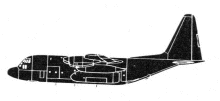Incident Overview

Description
The aircraft, which was based at Calgary, Canada, had been chartered to carry out a Radio Echo Survey task for the Italian National Antarctic Programme and the accident occurred during the ferry flight, as the aircraft took off from Rothera, a UK base on Adelaide Island, and struck an iceberg which was situated just off the end of the runway in use. The aircraft was fItted with two ferry fuel tanks in the fuselage and there were two pilots, an aircraft engineer and a technical adviser aboard. The aircraft was destroyed by a post-impact fire. There was no evidence to show that any weight and balance calculations had been made for the accident flight. The ‘approved’ Flight Manual MTOW for this aircraft was 12,500 lb and it was operating more than 6,000 lb over that weight. However, the operating company (incorrectly) believed that it was permissible to operate under the Supplement 14 dispensation, which allowed an MTOW of 17,500 lb, but the aircraft was more than 1,000 lb above that limit as well. The aircraft needed a 408 m ground run before becoming airborne. The pilot had been advised to fly round the side of an iceberg that was positioned 517 meters past the runway end. Instead, the pilot continued straight ahead in an attempt to climb over the iceberg. The aircraft was seen to roll from side to side just prior to the stall which occurred at a height which was insufficient to allow recovery before striking the iceberg.
Primary Cause
Incorrect MTOW and dispensation compliance.Incorrect MTOW and dispensation compliance.Share on:


